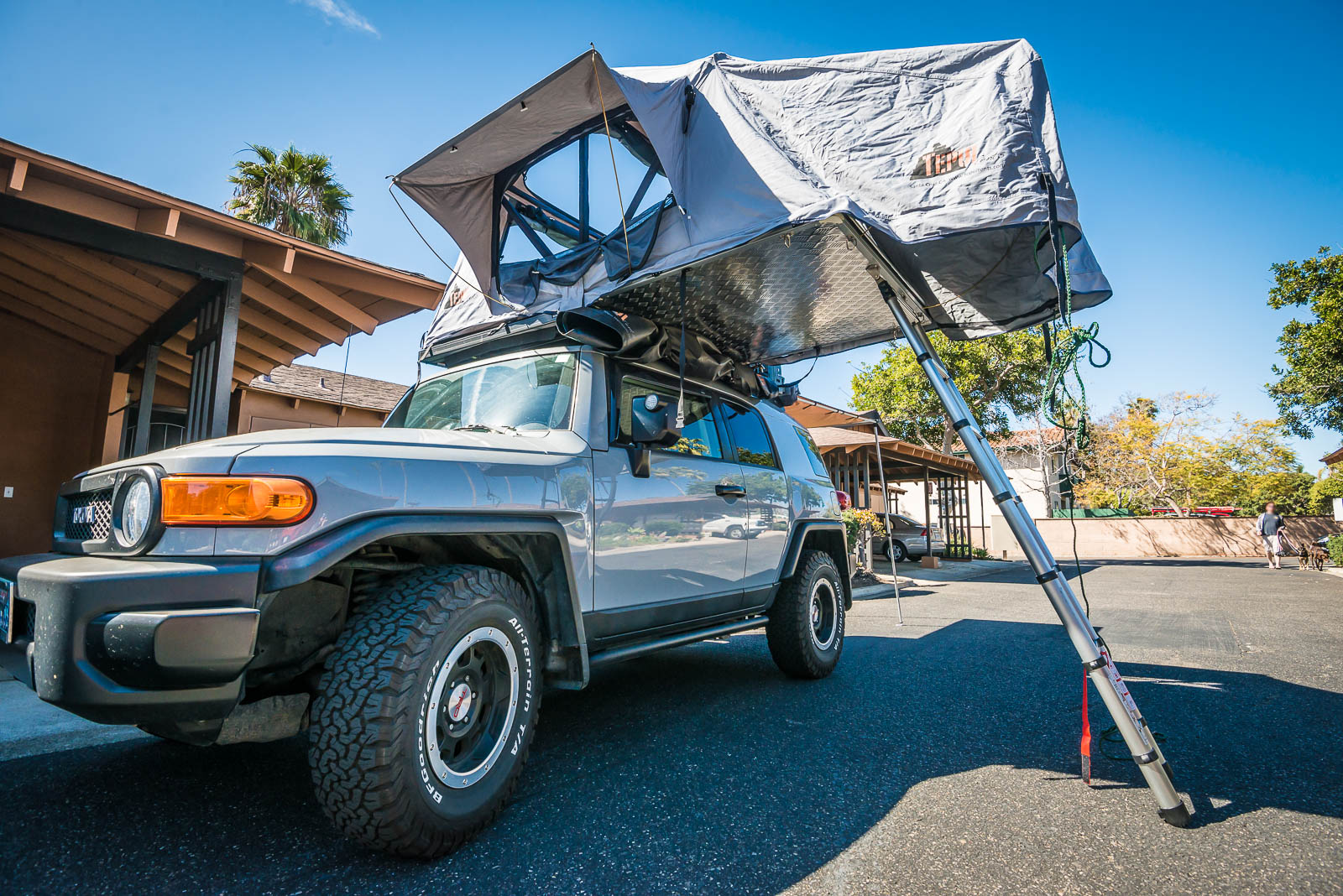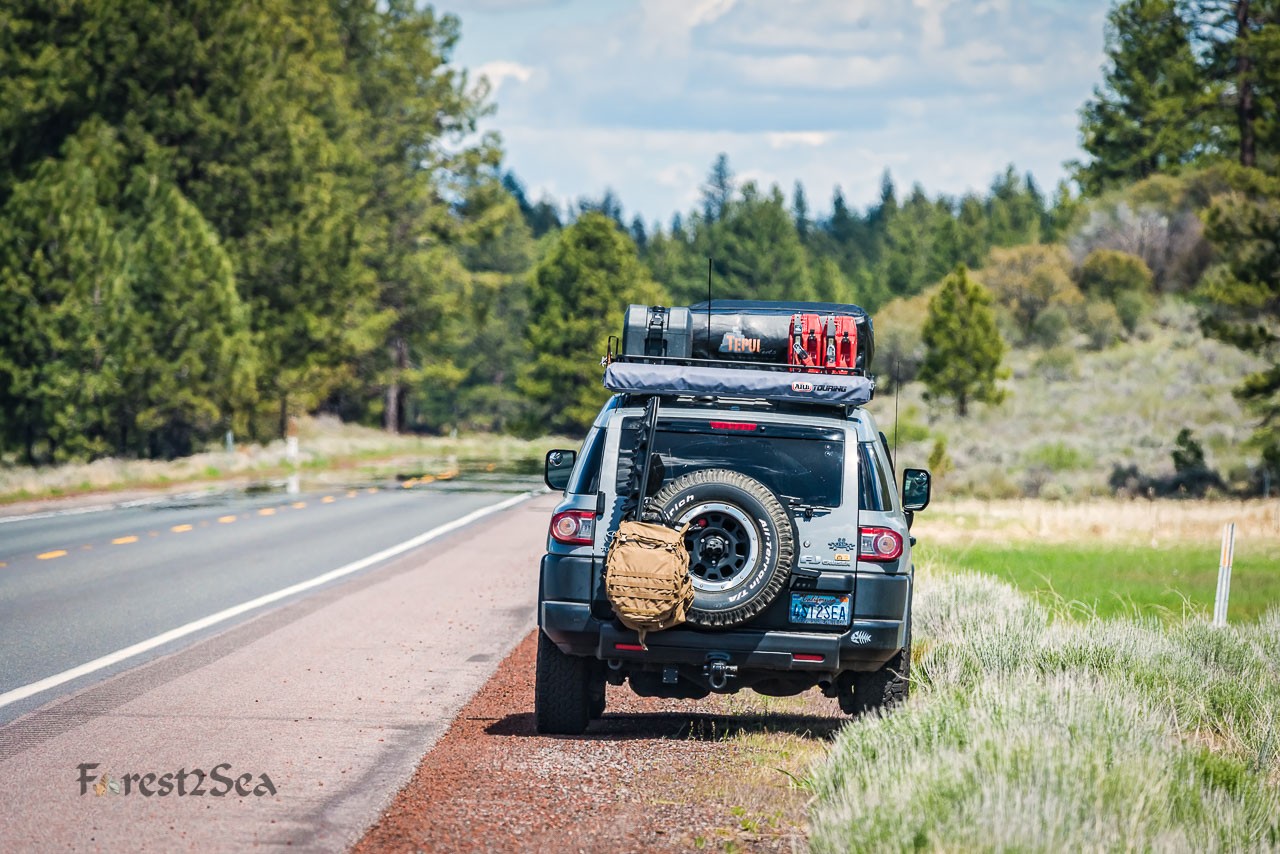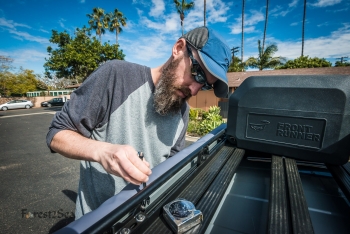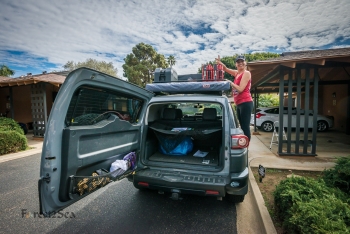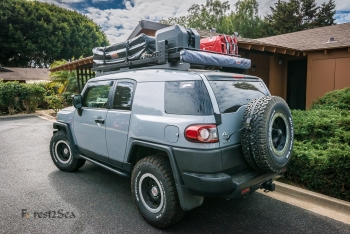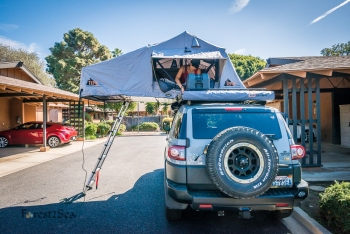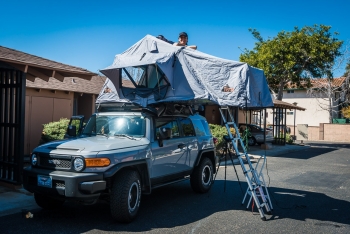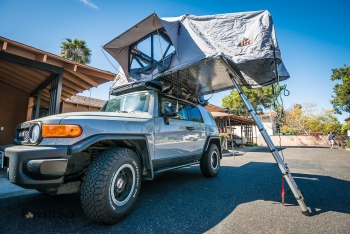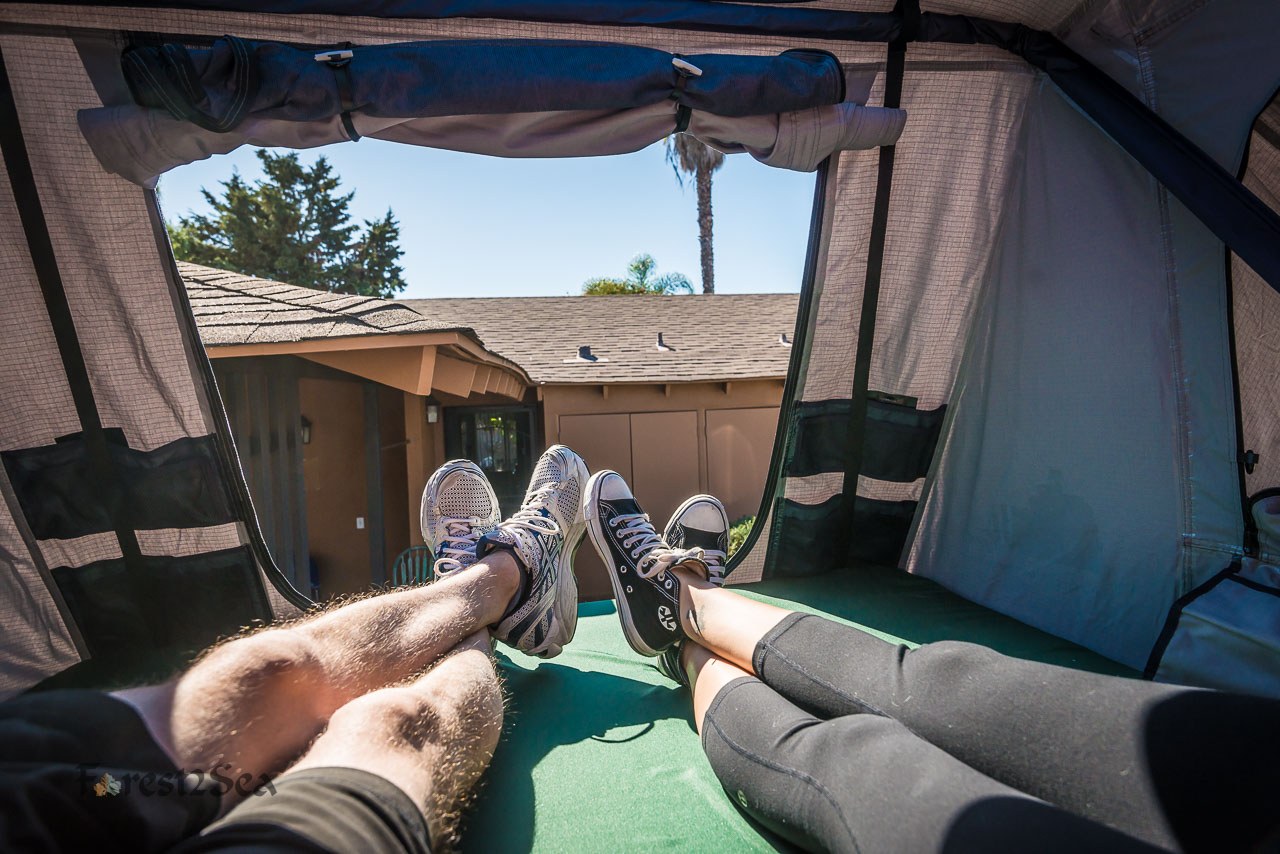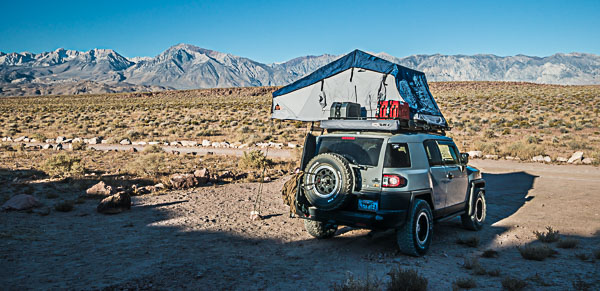Accessorize It!
Now that the roof top tent is installed and we’ve built a camp kitchen, next up in CrtrGrl and my FJ Cruiser overland build-out is installing some accessories. Our goal is to make camping and exploration easier and more comfortable, by spending less time setting up camp and having more time for nature and photography. We want to make sure we can get ourselves out of any situation, carry extra gas securely, and have extra water.
Our Choices
- Power
- Goal Zero Yeti 400 Lithium Portable Power Generator
- Goal Zero Boulder 100 Briefcase Solar Panel & 15 ft extension cable
- Recovery Gear
- Hi-Lift XT485 48″ Jack with JakJaw slider tube adapter
- MaxTrax MKII (black)
- 20′ Tow Strap & Shackle Hitch Receiver by Rhino USA
- Miscellaneous
- Rain/Sun Protection – 1250 mm wide (4′) Awning from ARB
- Fuel – 20L (5 gallon) Red Jerry Cans by Wavian with Front Runner mount
- Water – 45L Water Tank with hose and faucet by Front Runner
- Spare Wheel Step Ladder by Front Runner
- Trash Bag – Surplus USMC FILBE Main Pack Large Rucksac
Systems Engineering / Requirements Analysis
As a quick reminder, here’s the list of features we wanted for our build out. The camp kitchen and accessories meets the following requirements (in blue italic):
- Easy to setup and take down
- Protection from the sun, wind and rain
- A camp kitchen
- Plenty of extra gas
- Plenty of extra water
- A comfy bed
- Modular
- Shower setup
- Storage
- Off-grid power
- Socially/eco-responsible products
- Durable
- Hot Tub*
- Butler*
*Hmm, maybe we’re asking for too much.
Check out the really cool video that CrtrGrl made for Part 5 – Accessories:
Power
We wanted renewable energy for powering the fridge and charging any other electronics, like lights, cameras and smartphones. A Goal Zero Yeti 400 Lithium battery pack, which can hold 40 amp hours of electricity, fit our needs. It’s setup to charge while driving and because the ARB 50 qt fridge is very efficient and runs on DC power, it’s sufficient most of the time.
If we’re parked in one location for more than a couple of days, we need solar panels to keep the battery charged. We went with the compact Goal Zero Boulder 100 briefcase solar panels. We could have opted for cheaper components, but Goal Zero was founded on lifting up people with less, and we want to support that.
Recovery Gear
For recovery gear, we went with the tried and true 4′ Hi-Lift Jack and added a JakJaw slider tube adapter, since our FJ has rock sliders. It’s the most logical place to jack up the FJ in case of getting stuck or needing to swap out the spare tire. We ran out of mount space on the roof rack, so this goes in the space behind the driver and passenger seat. It’s only in case of emergency, so we don’t plan to use it often.
We purchased a pair of MaxTrax MKII vehicle extraction and recovery devices. In mud or sand, these are the best way to self-recover without a winch or another vehicle. We mounted these on the rear spare tire using a pair of Rok Straps and a cable lock.
Finally, we purchased a 20′ tow strap and shackle hitch receiver by Rhino USA, in case we need to be pulled out or pull someone else out of a sticky situation. These were a pretty low cost insurance option.
Gas and Water
Since the FJ’s gas tank can only hold 19 gallons and they get about 18 mpg on average, we need to be able to carry more fuel. The use case we’re familiar with is Death Valley National Park, which only has one main gas station at Stovepipe Wells and the furthest reaches of the park (Eureka Dunes, the Racetrack) are a stretch on one tank of gas. If you go back to Part 1, you can see a photo of our FJ in Death Valley with two plastic 5 gallon gas containers strapped to the roof. We purchased two 5 gallon Waivian red jerry cans and a Front Runner mount for the roof rack. They are secure, lockable and don’t slide around like our previous solution.
Also in the theme of Death Valley, we wanted a roof mounted water tank. We went with the Front Runner 45L (~12 gallons) water tank and faucet. This allows us to carry extra water outside of the cabin and with a 6′ hose attached, it’s gravity fed and reaches down to the ground for washing dishes and hands perfectly. With a plastic wash tub below it, it’s the perfect camp sink.
Miscellaneous Gear
For access to the roof, especially when setting up the roof top tent, we needed a convenient ladder mechanism. We investigated ladders that attach to the roof rack, but most of them block the rear window from opening. That’s an important feature to us, especially with the way the air dynamics work with the FJ windows – cracking the rear window means you’re not getting blown out in the face while driving. Front Runner had the perfect solution with a lightweight step system that straps onto the spare tire. With the rear door closed, it’s sturdy enough to handle my weight climbing up to the roof.
Trasharoos are the standard for keeping smelly trash outside the vehicle. But instead we opted for purchasing a surplus used USMC FILBE rucksack for less money. They’re virtually indestructible and can hold a similarly large trash bag. We mounted ours on the side of the rear spare tire with the MaxTrax so that we can still use the backup camera in the center of the spare tire.
What’s Next?
And the adventure begins…

